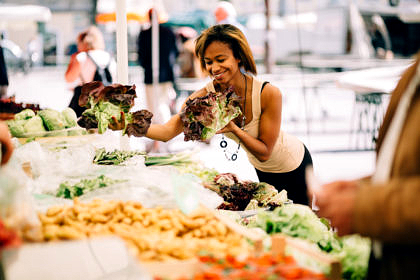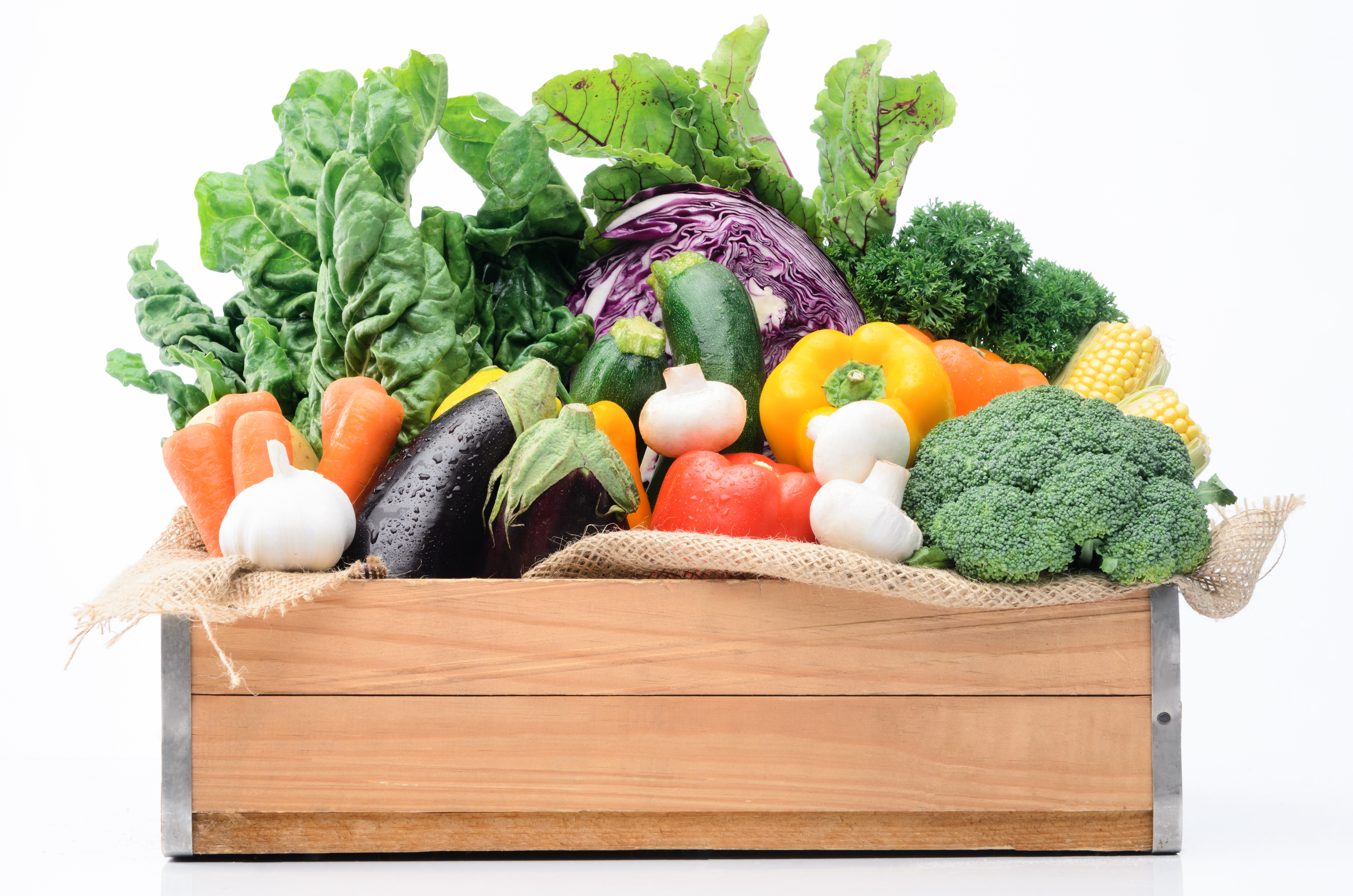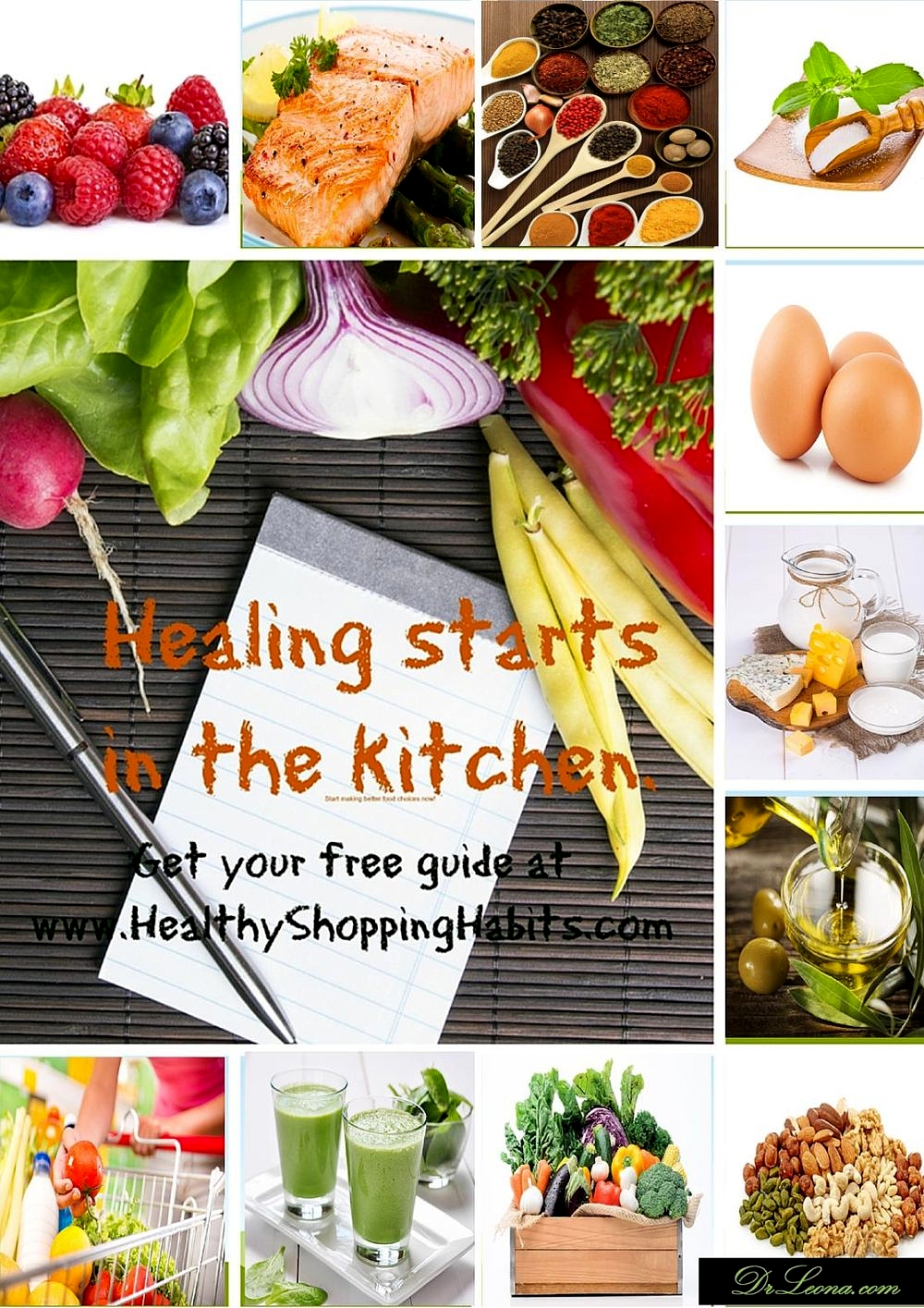What Can I Eat?

One of the biggest questions that comes up for my patients after they have made the decision to make healthier lifestyle choices is, “Now, what can I eat?”
This is coming from both men and women who mean well and committed to getting well. But this struggle is real when you are so accustomed to buying processed or fast food, popping food into the microwave, eating out at restaurants almost everyday, or just living with the wrong advice. You take that all that you have been doing away and you feel like nothing is left.
This is the reason why I created the Journey to Healing Food Shopping Guide. It was designed with you in mind; to remove the confusion and overwhelm, and to help simplify your path to a new anti-inflammatory lifestyle. When I say an anti-inflammatory lifestyle, I am referring to incorporating foods that promote healing, unlike inflammatory foods, such as sugar and preservatives, which contribute to sickness and disease.
The biggest way we can control our health is by controlling what we purchase and what we put into our mouths. I am going to share some highlights of this guide with you, but be sure to get your free copy today at www.HealthyShoppingHabits.com.
The purpose of this guide is to encourage you to start creating healthy food shopping habit right away. Use this guide to increase your level of awareness and knowledge so that you can gain true health and wellness. This was created for you as a tool and resource for your journey to healing. One of the biggest challenges of beginning a new healthy lifestyle is knowing where and when to start. The best place to start is in the kitchen and the best time to start is now.

This is what you will learn in the Journey to Healing Food Shopping Guide:
How today’s food (or non-food) is the most influential aspect in people’s lives that affects the tendency for fatigue, digestive problems, weight gain, or serious illness.
The Standard American Diet has drastically changed so much in the last 100 years that we are in a state where we now eat more chemicals than we eat nutrition and it is making us sick. Traditional diets of whole foods, which were locally-raised and consumed fresh, have been replaced by diets of stripped, depleted, unbalanced, altered, denatured, artificial, highly processed foods. The increased intake of high-calorie, low nutrition foods, which are widely available, heavily promoted, cheap, and served in large portions, is creating a toxic food environment. These toxic foods are highly advertised; people eat considerably more than they have in the past; food is readily accessible and takes no time or energy to prepare; and people eat outside the home more than ever. These foods lacking nutritional value are toxic and the fat tissue is used as a toxic waste dump site. In other words, people are eating too much of what they do not need and not nearly enough of what they do need in order to be healthy and lean. Combine this with an increasingly urbanized, automated and sedentary lifestyle and we have an ideal recipe for sickness and disease.
The 2 lies that are making Americans more fat, more sick, and spending more money on healthcare than any other country.
America is now more fat, more sick, and spends more money on healthcare than any other country. In fifty years, obesity rates have increased 214 percent and our government tells us to eat less, exercise more, avoid fat, and eat more whole grains. This advice includes two lies that are killing Americans.
- Grains are good for you
- Fat is bad for you
This guide will explain how this advice has actually increased chronic illness. Over and over I have seen patients who were dealing with a chronic illness for many years, reduce their symptoms and increase their energy by simply eliminating grains such as pasta, rice, and whole wheat from their diet. If you don’t believe me, try it for 30 days and see how you feel.
And yes, fat is good for you! We became so fat phobic in our society. We are grabbing products that say low fat this and low fat that, not understanding how these artificial fats are actually worse for us than butter, cream and coconut oil. We need these good fats to help nourish the nerves and the cells in the body. You can be overweight and still be fat deficient. Studies show the connection between diets low in fat and chronic disease.
The foods you must add to your grocery list that will help you achieve your weight loss and health goals.
The list of foods you should add to your grocery list is broken down into the following categories:
Fruits and Vegetables — Learn the difference between organic and conventional produce. I have included a list of the “Dirty Dozen” and the “Clean 15”. These lists are especially useful if you live in an area where organic produce isn’t readily available.
The “Dirty Dozen” are the most contaminated with pesticides and it is recommended that you buy these food organic whenever possible. If you believe you cannot afford organic food, the “Clean 15” will give you a list of alternatives that are lower in pesticides.
Fish — Understand the difference between farm raised versus wild fish and which fish are the least contaminated with heavy metals and toxic chemicals.
Poultry and Meat — As you go through the guide, you will begin to realize that it is not the food itself that is bad, but how modern technology and mass production has turned a lot of “good” food to “bad” food. It is best to get the cleanest form of poultry and meat that you can get. Knowing and understanding where your food is coming from is extremely important. I like to get my meat and poultry from small and local farms that take care of their animals.
Eggs and Dairy — Commercial dairy products are loaded with antibiotics and chemicals. The cleaner the dairy, the better it is. Be careful if you have known allergy to dairy. Individuals with severe allergy to dairy may still find it difficult to digest dairy whether is clean or not. Cultured dairy may be easier to digest and may be an alternative, but of course there are those of you who have to eliminate dairy all together. I have included some resources where you can find good, clean dairy.
Fats and Oils and Nuts and Seeds — Remember the second lie killing Americans? Right here is a list of the good fats that you can incorporate into your diet. Also, be careful of your intake of nuts and seeds. It’s a great snack and some of us tend to overdo it, especially when you are trying to avoid the vending machine. Peanuts are not nuts, they are lectin containing legumes. Lectins and other anti-nutrients can adversely affect your health. This is why peanuts are a common allergen.
Sweeteners, Beverages and Other Ingredients — I discuss the dangers of artificial sweeteners and high fructose corn syrup, as well as share some healthier options. Then I conclude with a section on, spices and condiments.
As you can see, it is not just a shopping guide. You will find it very informative and it will help you to start filling up your pantry and refrigerator with healthier food choices. If you surround yourself with healthier food, you are more likely to eat it. 🙂
Begin your journey by developing healthy food shopping habits and increasing your level of awareness, so that you can begin to gain true health and wellness. Get your free informative shopping guide by visiting www.HealthyShoppingHabits.com.
Eating and shopping healthy is a habit. Eating food that processed is a habit. It’s a habit to grab that donut before work. It’s a habit to run to a nearby restaurant to grab lunch. It’s time to replace the old, unhealthy habits with new, healthy ones!. It can be done and you can begin today.
I hope you enjoy it and find it useful and you will carry this guide with you on your next shopping trip. Let me know if there is something more you would like to help you in your journey to healing.




